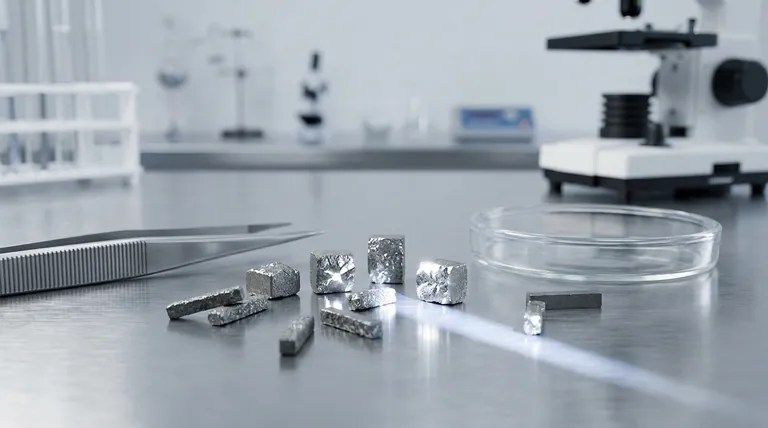No, lab-grown diamonds do not break easily. Because they are chemically and structurally identical to natural diamonds, they possess the exact same physical properties, including exceptional hardness and durability. Both lab-grown and mined diamonds are among the hardest substances on earth, making them highly resistant to scratching and everyday wear.
The core issue is a common misunderstanding of what a lab-grown diamond is. It is not a diamond imitation like cubic zirconia; it is a true diamond, simply created in a controlled environment. Therefore, its durability is not a point of difference when compared to a mined diamond.

What Determines a Diamond's Durability?
To understand why lab-grown diamonds are so durable, we must first understand what makes any diamond resilient. It comes down to two key properties: hardness and toughness.
Hardness: Resistance to Scratching
A diamond's legendary hardness is rated a 10 on the Mohs scale, the highest of any natural mineral. This means it is extremely difficult to scratch.
The only material that can effectively scratch a diamond is another diamond. This exceptional hardness applies equally to both lab-grown and mined diamonds because they share the same atomic structure.
Toughness: Resistance to Breaking
Toughness refers to a material's ability to resist chipping or breaking when subjected to force. While diamonds are the hardest mineral, they are not indestructible.
Like natural diamonds, lab-grown diamonds have "cleavage planes"—internal planes of atomic weakness where they can split if struck with enough force at the right angle. This risk is inherent to all diamonds, regardless of their origin.
Lab-Grown vs. Mined: An Identical Foundation
The durability debate is settled by science. Lab-grown diamonds are physically and chemically indistinguishable from their mined counterparts.
Identical Chemical Composition
Both types of diamonds are made of pure carbon atoms arranged in a rigid cubic crystal lattice. This specific atomic bond is what gives a diamond its remarkable strength.
A Replicated Creation Process
The primary methods for creating lab diamonds, High-Pressure/High-Temperature (HPHT) and Chemical Vapor Deposition (CVD), are designed to replicate the conditions under which diamonds form in the earth's mantle.
These processes don't create a new material; they simply recreate the environment necessary to build a diamond, atom by atom, resulting in the same stable structure.
The Only Difference is Origin
The key distinction is not in the final product but in its history. One formed over billions of years under uncontrolled natural conditions, while the other was grown in a matter of weeks in a highly controlled laboratory setting. For the diamond itself, this difference has no bearing on its physical resilience.
Understanding the Real Risks to Your Diamond
Worrying about a lab diamond's origin is misplaced. The real factors that impact the longevity of any diamond in a piece of jewelry are its cut, its setting, and how it is worn.
The Myth of Indestructibility
No diamond is invincible. Both natural and lab-grown diamonds can chip if you hit them hard against a countertop or a metal surface. The risk is low, but it exists for all diamonds.
Cut and Shape Vulnerability
Certain diamond shapes are inherently more prone to chipping. Cuts with sharp corners, like princess, marquise, or pear shapes, have vulnerable points. Round brilliant cuts are the most durable due to their lack of sharp edges.
The Importance of the Setting
The security of your diamond often depends more on its setting than its origin. A bezel setting, which encircles the diamond's edge with metal, offers maximum protection. A high-prong setting, while showcasing the diamond, leaves its girdle more exposed and vulnerable to impact.
How to Ensure Your Diamond's Longevity
Your focus should not be on whether the diamond is lab-grown or mined, but on how to protect the stone you choose.
- If your primary focus is durability: Choose a robust cut like a round brilliant and a protective setting such as a bezel or a V-prong for pointed corners.
- If your primary focus is daily wear: Treat your lab diamond with the same care you would any precious gem—remove your jewelry during strenuous activities and avoid exposing it to harsh impacts.
- If your primary focus is peace of mind: A lab-grown diamond provides the exact same physical performance and brilliance as a mined diamond, allowing you to invest in a larger or higher-quality stone without compromising on durability.
Ultimately, choosing a lab-grown diamond means you are getting a true diamond in every measurable way, including its remarkable resilience.
Summary Table:
| Property | Lab-Grown Diamond | Natural Diamond |
|---|---|---|
| Hardness (Mohs Scale) | 10 | 10 |
| Toughness | Identical | Identical |
| Risk of Chipping | Same | Same |
| Daily Wear Resistance | Excellent | Excellent |
Ensure your laboratory's precision with equipment as reliable as a diamond. At KINTEK, we specialize in high-quality lab equipment and consumables designed for durability and accuracy. Whether you're setting up a new lab or upgrading your current tools, our products meet the rigorous demands of modern research. Contact us today to discover how KINTEK can support your laboratory's success with dependable, long-lasting solutions.
Visual Guide

Related Products
- CVD Diamond Dressing Tools for Precision Applications
- Cylindrical Resonator MPCVD Machine System Reactor for Microwave Plasma Chemical Vapor Deposition and Lab Diamond Growth
- CVD Diamond Domes for Industrial and Scientific Applications
- CVD Diamond Cutting Tool Blanks for Precision Machining
- Microwave Plasma Chemical Vapor Deposition MPCVD Machine System Reactor for Lab and Diamond Growth
People Also Ask
- What is the hardness of CVD diamond? The Ultimate Guide to Engineered Super-Materials
- How thick is CVD diamond coating? Balancing Durability and Stress for Optimal Performance
- How thick is diamond coating? Achieve Unprecedented Precision with Ultra-Thin Films
- What are some ethical issues with diamond mining? Uncover the Hidden Costs of Your Gemstone
- What are the environmental issues with diamond mining? Uncover the True Ecological and Human Cost



















